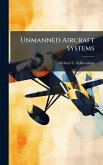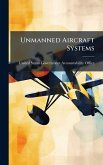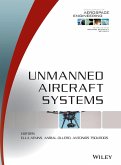Although Unmanned Aircraft Systems (UASs) are proliferating in the joint operational environment at an astonishing rate, they are meeting only a fraction of the demand. The USAF's failure to meet this insatiable demand for armed intelligence, surveillance, and reconnaissance (ISR) caused the Army to develop their own "organic" UAS capability. Does it make sense to spend $1.02B to create an aircraft capable of ranging the entire joint operations area, yet control it at the Army division level? This paper argues it is not in the best interest of the joint fight and it recommends alternative solutions for the Army's integration of "theater-capable" UASs. The research paper analyzes five contentious issues in a problem-solution format based on the USAF's MQ-1B Predator and the Army's planned MQ-1C Sky Warrior unmanned systems. The five issues include centralized versus organic control, rated pilots versus operators, airspace control methods, service interdependence, and deployment footprint. This research paper paints a picture of the current environment by looking at the situation from both the USAF and Army perspectives. This situation is not conducive to effective joint operations, and it will continue to deteriorate as the Army brings high altitude UASs online. This paper finds that the Army's decentralized, low altitude system composed primarily of rotary-wing assets historically coexisted underneath the Air Force's centrally controlled fixed-wing system. But the addition of more capable UASs, like Sky Warrior, brought the Army system up into the USAF system--where the two systems are no longer capable of providing an environment conducive to joint operations. This work has been selected by scholars as being culturally important, and is part of the knowledge base of civilization as we know it. This work was reproduced from the original artifact, and remains as true to the original work as possible. Therefore, you will see the original copyright references, library stamps (as most of these works have been housed in our most important libraries around the world), and other notations in the work. This work is in the public domain in the United States of America, and possibly other nations. Within the United States, you may freely copy and distribute this work, as no entity (individual or corporate) has a copyright on the body of the work. As a reproduction of a historical artifact, this work may contain missing or blurred pages, poor pictures, errant marks, etc. Scholars believe, and we concur, that this work is important enough to be preserved, reproduced, and made generally available to the public. We appreciate your support of the preservation process, and thank you for being an important part of keeping this knowledge alive and relevant.
Bitte wählen Sie Ihr Anliegen aus.
Rechnungen
Retourenschein anfordern
Bestellstatus
Storno








